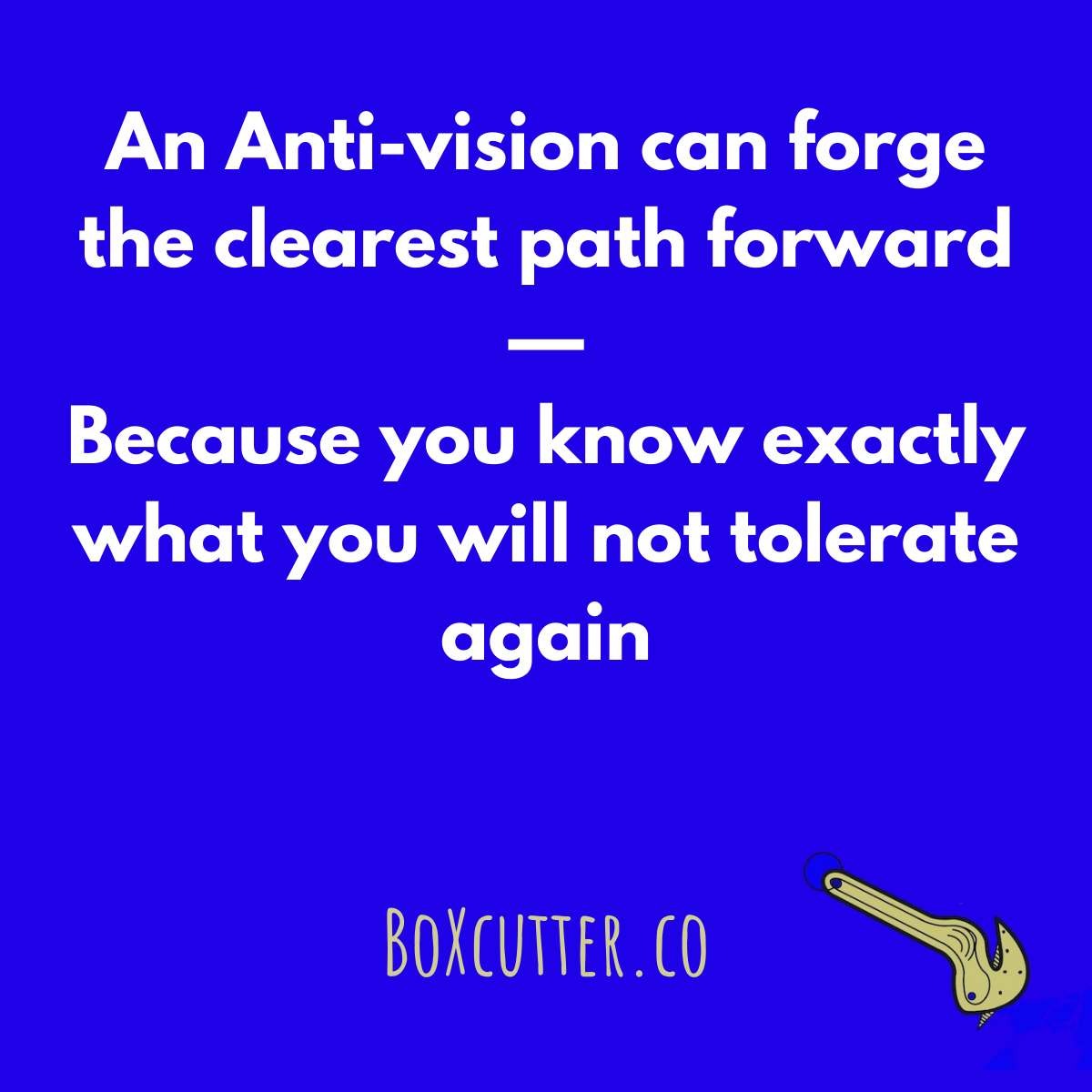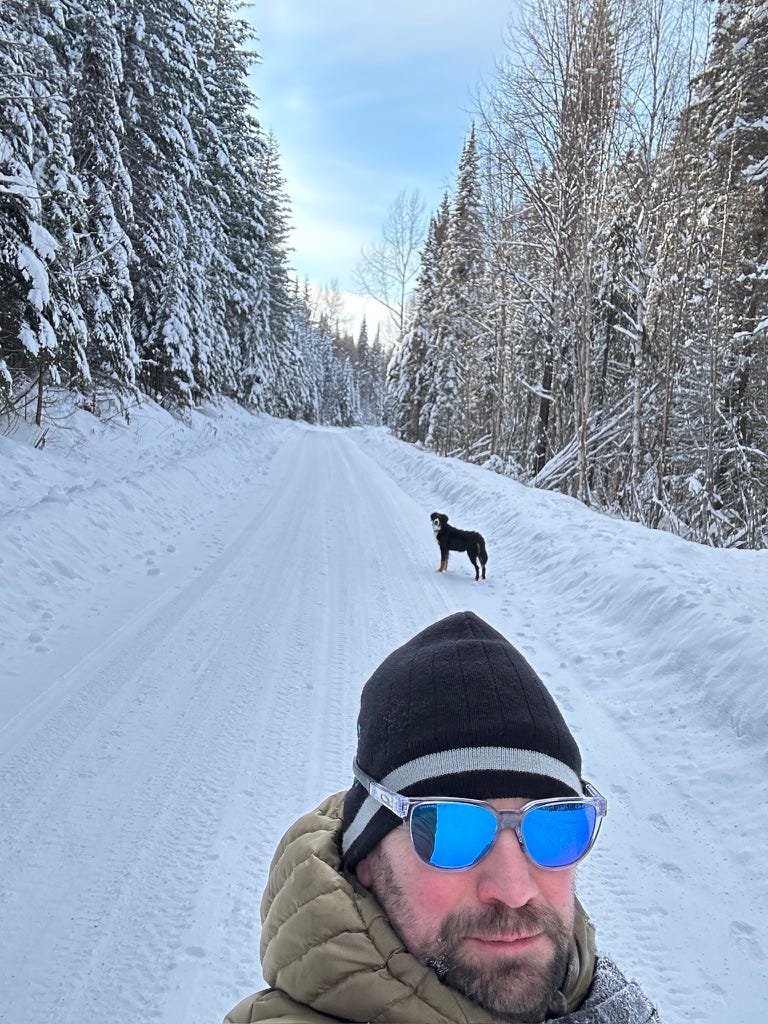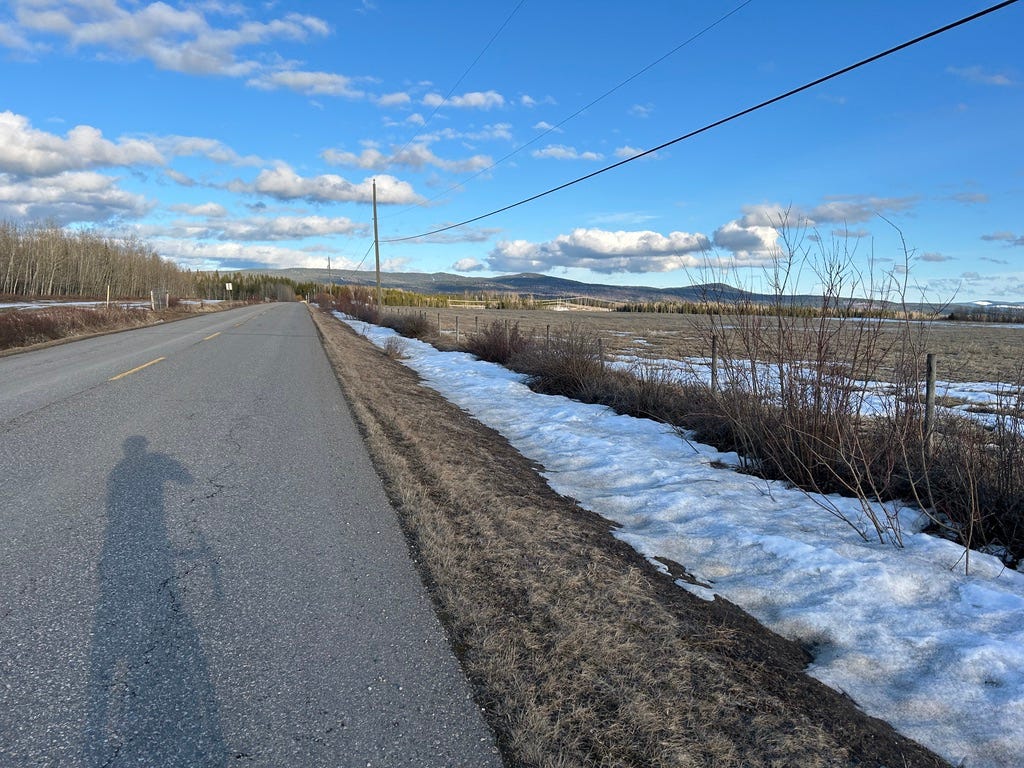Creativity Isn’t Luck—It’s Direction (and Distraction)
The Soulpreneur Series Free Issue No. 33
Creativity isn’t luck or “Eureka!” lightning bolts.
It’s intentional choices, decisions, and set directions.
It’s a system you shape—and are shaped by—in equal measure. It’s deciding what pulls you and what doesn’t.
Consider, for a moment, the words traction and distraction.
Both come from the Latin root trahere, meaning “to draw or pull.” Distraction adds the suffix ‘dis-,’ meaning “away.” Thus:
Traction pulls you in.
Distraction pulls you out.
You might think traction is good and distraction bad. But it’s not that simple. You need both.
Traction is focus. Execution. Momentum.
Distraction is openness. Curiosity. Intuition.
One builds forward motion. The other reveals insights, questions, discoveries.
What is a Strategic Creative?
Strategic creatives—those who build businesses around their creativity—don’t eliminate distractions.
Instead, they learn to lean into them at the right times, balancing open wanderings with structured and boundaried focus.
They create workflows, habits, and systems. Not to cage creativity in but to catch it when it arrives.
And here’s a complicated truth many successful creative folks learn (some the hard way): Ideas aren’t just built from things—they also emerge from spaces between things.
Words don’t become sentences without spaces.
Notes don’t become music without silence.
Creativity often results in tangible products and outcomes—courses, articles, strategies, workshops, books—but it also requires stillness, silence, gaps, and distance.
Distraction provides space for fresh meanings to emerge or, more simply, where thoughts, snippets, new learning, and ideas percolate, skip and jump, and (often) result in new theories, products, or systems.
Creativity without systems can become chaotic. And systems without creativity often become hollow, sterile, and robotic.
Creativity as Practice
Creativity isn’t something you passively await, or is it magically granted to a select few at birth. It’s a way of being—one that is cultivated and practiced.
It’s openness to possibilities, sensitivity to intuition, and responsiveness to your surroundings. It’s also getting things done, produced, and published (aka. shipped).
In his excellent book The Creative Act: A Way of Being, Rick Rubin suggests creativity is about presence, noticing subtleties others overlook, and refining awareness.
Similarly, in his mid-1990s book Creativity: Flow and the Psychology of Discovery and Invention, psychologist Mihaly Csikszentmihalyi emphasized creativity isn’t isolated genius—it’s deeply embedded in systems.
The book is based on his almost thirty years of research and interviews with over 100 creative people, including Nobel prize winners and others.
Csikszentmihalyi suggests creativity occurs in interactions between a person’s skills, domains of knowledge they work in, and the field of people who recognize and validate creative contributions.
For example, Einstein’s theory of relativity didn’t develop in isolation. It was based on creative theorizing of those before him, confirmed by those in his knowledge domains at the time and after.
In other words, creativity is not only personal— it’s systemic.
It’s also an intentionally built practice intended to be returned to repeatedly. A practice that takes practice.
For digital entrepreneurs, creative business builders, and Soulpreneurs alike, creativity isn’t just outputs—articles, books, courses, workshops, coaching services, digital products, etc.
It’s also the quality of attention, intention, and rhythm you bring to the work.
The forms may vary, but the practice is universal.
If you want lightning insights, you must practice building and cultivating storms.
3 Years of Creative Practice (Driven by an Anti-Vision)
This month (April) marks three years since I left the corporate public sector and set deep intentions to launch creative enterprises (from scratch).
For those pondering this or in the midst of it, social media is full of advice on developing a clear vision, goals and direction.
Yes, these are important.
However, they simply won’t get you through the days of doubt. (And, those I assure you, come for Soulpreneurs and those establishing and running creative enterprises)
In addition to being intentional about what I wanted to build, I established a piercing Anti-vision to ensure I was abundantly clear on what I never intended to return to (e.g., toxic workplaces and offices).
For over two and a half years, I’ve published almost daily on LinkedIn, written hundreds of articles on Medium, published weekly issues of Box Cutter Co., and established a creative venture in “The Business Creator Economy.”
These activities aren’t random. They are intentional practices designed to cultivate rhythm and flow in my creative process. They are intentional creative practice.
Yes, frequent posting on LinkedIn, Substack, Medium, and other platforms can be effective, as well as free marketing. But it’s also more than that—
…it’s how I practice creativity (privately and publicly), refine and test my thinking, and stay consistently tuned to traction and distraction.
Regular posting, writing, and publishing create structure, accountability, and persistent steps forward. (Screw the ‘be consistent’ advice — be persistent, instead)
Alongside the daily creative movement forward is keeping daily distractions — as a key component of creative practice.
This provides the space between ‘the work’ for openness to new ideas, experimentation, and letting my mind wander through seemingly unrelated topics and thoughts.
These are often walks, which I do almost every day. 👇
However, now that spring has arrived, I also do a lot of bike riding, especially on isolated gravel roads. This was last week 👇
These physical activities and movement are also intentional creativity practices providing critical distractions — leading to unexpected connections, insights, and previously unseen opportunities.
(And damn good for the Soul)
5 Tangible Ways to Balance Traction and Distraction
Here are five tangible ways to balance traction and distraction in your creative endeavours:
1. Define Constraints (Clearly and Often)
Creativity thrives under constraints. Without clear edges, ideas drift.
Try tight timelines: Can you build your next online course outline in one hour, not ten?
Set narrow parameters: What if your next post or newsletter could only be 250 words? (I’ve started experimenting a lot more with this)
Limit inputs: Can you teach one powerful thing in your next video or podcast episode instead of ten?
2. Wander With Purpose (And Intentional Curiosity)
Creative entrepreneurs benefit from deliberate exploration.
Read at angles. Step outside your usual industry sources. A business consultant might learn unexpected lessons from architecture or poetry.
Observe relentlessly. Notice what others overlook. For example, a graphic designer might find fresh ideas by observing how baristas organize their workflow. (Designers do this frequently)
Create ‘wandering time.’ Schedule blocks each week to explore something completely unrelated to your daily work, such as art, travel stories, or historical biographies.
3. Capture Constantly (Nothing Too Small)
Your creative output relies on consistent and persistent input.
Keep an ideas journal (physical or digital). Write down everything—even incomplete thoughts. (I use the Notes app, Notion, and good ‘ol pen and paper)
Use voice memos. Capture sparks during walks, commutes, or downtime. (Voice memos can also be put in Notes, as can scanned words or quotes from a book).
Create a “swipe file.” Collect snippets, quotes, and visuals that inspire you, catch your attention, AND repulse you. A single captured insight might become the heart of your next course, article or consultancy offer.
4. Return to Structure (Refine and Rebuild)
Creative practice and momentum builds on itself. Refine your raw insights into products, services, or content.
After wandering, return to your established creative systems and practices.
Turn one small insight into a clear takeaway your audience or clients might use or need.
Use structured checklists or frameworks like “The Rule of Three,” the “1-3-1” writing framework, or simple mind maps to organize your ideas into published work.
5. Repeat (Rhythm, Not Formula)
The magic of creativity is in rhythm, not necessarily routine.
Creativity isn’t a linear formula. It’s cyclical—push and pull, forward and away.
Regularly shift between distraction and traction.
Learn and lean into your personal creative ebb and flow. The rhythm is a system (and practice) you refine over time.
For me, I break up my day into segments, with mornings as generally the time for my own creative practices and posting, then get the work done I need to do for clients (with a walk in between)
Why Does This Matter for Creative Entrepreneurs?
Creativity isn't just a nice thing to have if you’re a creative entrepreneur or even an employee. It’s essential.
You’re turning insights, expertise, and creative intuition into tangible business opportunities, products, and/or revenue.
(Stay tuned for upcoming Box Cutter Co. issues focussing on The Business Creator Economy, as a sub-sector of The Creator Economy — and ripe for opportunities)
This structured-yet-flexible practice of balancing traction and distraction can assist you in:
Continuing to build and offer quality products and services.
Staying innovative, relevant, and ahead of stagnation, irrelevance, and boredom.
Cultivating trust and relationships by consistently delivering value while remaining open to new ideas and insights. (rinse and repeat as necessary)
Hold Tensions, Build Storms
Creativity isn’t waiting—it’s actively building while also patiently waiting.
If you want those lightning moments, practice building storms.
But keep in mind:
Even storms are still before they break
Lightning waits in silence before it cracks
Creativity lives between intentional systems and silences
Your task isn’t to choose one over the other, or practice one over the other, but to hold space for Both/And.
Start small. Carry on with intention.
How About You?
Where could you benefit from deliberate distraction?
How can you build practices that give you consistent creative rhythm?
Where in your creative process might you need more intentional traction?
Drop a comment. Always curious how others navigate this.






